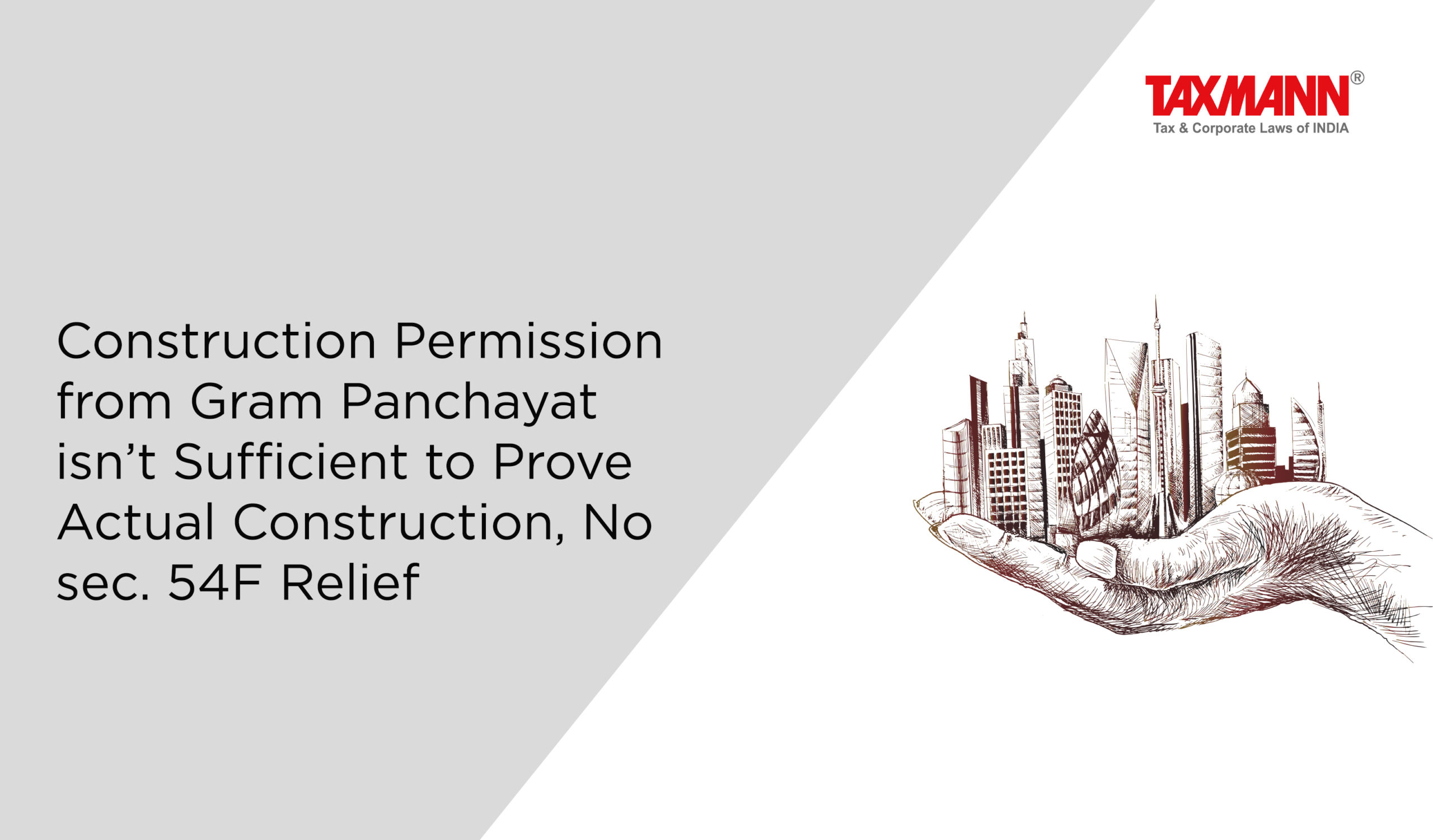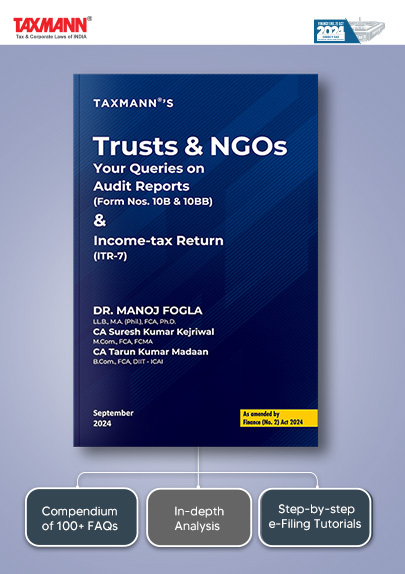Construction Permission from Gram Panchayat isn’t Sufficient to Prove Actual Construction, No sec. 54F Relief
- Blog|News|Income Tax|
- 2 Min Read
- By Taxmann
- |
- Last Updated on 28 June, 2023
Case Details: Smt. Amarnath Sarala v. ITO - [2023] 151 taxmann.com 100 (Bangalore-Trib.)
Judiciary and Counsel Details
-
- N. V. Vasudevan, Vice President & Chandra Poojari, Accountant Member
- Venkatesh Kumar, A.R. for the Appellant.
- Sankar Ganesh K, D.R. for the Respondent.
Facts of the Case
Assessee, an individual, earned long-term capital gains on selling two properties. Assessee claimed exemption under section 54F of the amount of capital gains for the construction of the residential property.
The assessee had bought the land nearly towards the completion of three years from the property’s sale date. During the proceedings, a certificate from a Chartered Engineer giving the completion status of the house was furnished. As the assessee did not construct the house completely, Assessing Officer (AO) disallowed the exemption claimed under section 54F.
On appeal, CIT(A) upheld the additions made by AO, and the matter reached the Bangalore Tribunal.
ITAT Held
The Tribunal held that if the assessee constructed any residential house, the assessee was required to place necessary evidence to prove that the construction had taken place. Before the lower authorities, no evidence has been furnished regarding the construction of new house to show that the sale proceeds of the land were utilised for the construction of the new house.
It is needless to say that when the assessee claimed deduction under section 54F, it was incumbent upon the assessee to place necessary evidence in support of its claim. The onus lies on the assessee to prove by way of evidence to justify their claim for deduction.
The assessee had not placed any convincing evidence, so it can be inferred that a residential building was constructed out of the sale proceeds of the sale of land and also did not place evidence for the purchase of any materials relating to the construction of residential building. Merely producing a copy of permission from Gram Panchayat with regard to construction permission itself cannot discharge the assessee from proving actual construction.
In the absence of any material to suggest the construction of the house out of the sale proceeds of the land, the assessee was not entitled to deduction under section 54F.
List of Cases Referred to
-
- M.S. Amarnath v. ITO [IT Appeal No. 673 (Bang.) of 2019, dated 21-6-2022] (para 4).
Disclaimer: The content/information published on the website is only for general information of the user and shall not be construed as legal advice. While the Taxmann has exercised reasonable efforts to ensure the veracity of information/content published, Taxmann shall be under no liability in any manner whatsoever for incorrect information, if any.

Taxmann Publications has a dedicated in-house Research & Editorial Team. This team consists of a team of Chartered Accountants, Company Secretaries, and Lawyers. This team works under the guidance and supervision of editor-in-chief Mr Rakesh Bhargava.
The Research and Editorial Team is responsible for developing reliable and accurate content for the readers. The team follows the six-sigma approach to achieve the benchmark of zero error in its publications and research platforms. The team ensures that the following publication guidelines are thoroughly followed while developing the content:
- The statutory material is obtained only from the authorized and reliable sources
- All the latest developments in the judicial and legislative fields are covered
- Prepare the analytical write-ups on current, controversial, and important issues to help the readers to understand the concept and its implications
- Every content published by Taxmann is complete, accurate and lucid
- All evidence-based statements are supported with proper reference to Section, Circular No., Notification No. or citations
- The golden rules of grammar, style and consistency are thoroughly followed
- Font and size that’s easy to read and remain consistent across all imprint and digital publications are applied






 CA | CS | CMA
CA | CS | CMA


